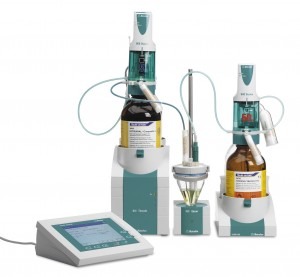
Metrohm explains how the Karl Fischer Homogeniser System can be used for water-content analysis in sweets.
Most sweets contain most or some of the following: cane sugar; corn syrup/cream of tartar; liquid (water or milk); fat; egg whites; gelatin; flavourings and colourings When cane sugar is heated, the second action - which you can't see - is the breakdown of sucrose into its two simple sugars: dextrose and fructose.
Acids or enzymes accelerate the process, such as adding vinegar.
A number of familiar products rely upon inverted sugars.
Fondant centres, fudge, butter confectioners, chewing gum, jellies, caramels and toffees, hard creams, high boiled sweets, butterscotch, marshmallow and soft creams all are results of this inversion process being carefully controlled.
High levels of inverted sugar, particularly fructose, pick up moisture from the air and the water is deposited on the surface of the candy.
This water leaches sugar from the candy surface and you can see a layer-by-layer change in the candy when water is present.
Too much water can cause the sweet structure to be unstable and the sweet may become too sticky.
The level of water is therefore critical in the manufacture of these sweets.
Karl Fischer titrations are used for water-content analysis, as it provides a quick, reliable and accurate method.
For products that do not release water readily, such as sweets, chocolate, peanuts, almonds and fudge, water content has been traditionally carried out by loss on drying (LOD), which can take up to two days for some products to become completely dry.
Metrohm now has the answer, using the Karl Fischer Homogeniser System.
The sample is physically broken down to a pulp by maceration, chopping and grinding of the sample in situ, in a sealed Karl Fischer vessel at an elevated temperature - typically 50C.
This seal is important because if this breakdown of the sample is carried out manually, samples can gain or lose water depending on the relative humidity during this process.
With the sealed vessel this cannot occur.
The maceration time, extraction time and the automatic stop criteria functions of the titration are controlled automatically by the 841 Titrando.
Typical analysis time is 3min and the system uses small amounts of solvents (less than 70ml) for the determinations.





